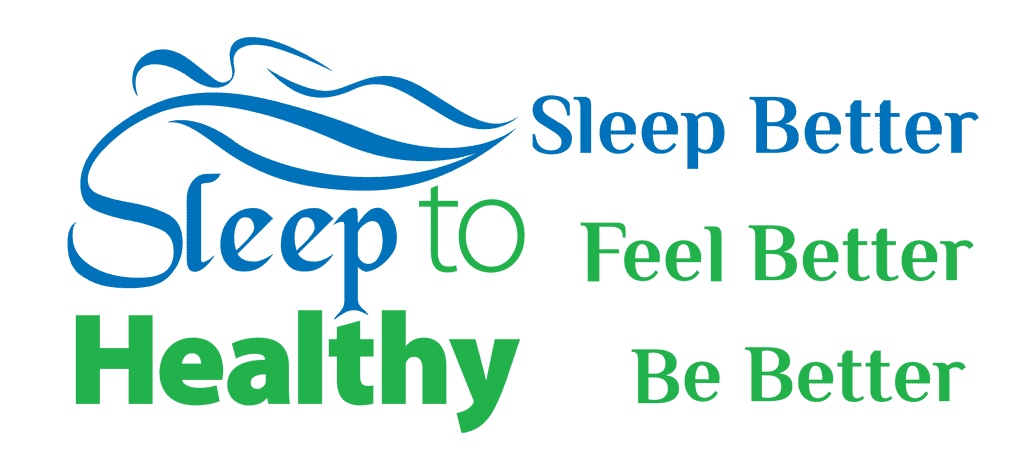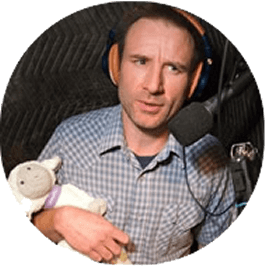
Sleeping with Pain (E3)
Click title to see more…
The Sleep to Healthy website is now a 10 lesson course on curing insomnia.
This course is not a quick fix and it is not easy. The course is based on CBTi or Cognitive Behavioral Therapy for Insomnia. CBTi is the first-line insomnia treatment method endorsed by:
- The U.S. National Institute of Health and
- The British Association of Psycho-pharmacology.
- The American Academy of Sleep Medicine.
By the end of the “Cure Insomnia” course, students will have the knowledge and tools they need to cure their insomnia. Not just now, but for a lifetime.
Did I mention that it’s free?
Go to SleepToHealthy.com to get started.
Summary: Guest Cindy Perlin, author of “The Truth About Chronic Pain Treatments”, Cindy discusses pain, its impact on sleep and how to improve your sleep if you are a pain sufferer.
- Cindy recalls her own experience with pain, the frustration of not getting effective treatments and how she finally found solutions that worked.
- Cindy tells about how non-physical aspects such as stress, anxiety, anger and fear can cause much of our pain or increase what pain there is.
- Cindy talks about the many solutions for pain relief that are available and how to sort out which ones to try.
- Cindy discusses why traditional options for pain sufferers are not sufficient to relieve pain for many sufferers.
- Cindy discusses the opioid crisis, why it happened and what alternatives are available including CBD in medicinal marijuana.
- Cindy tells us how we can relate more effectively with those in pain.
Episode’s Habit Creator: TBD.
Hosted by Dennis Trumpy. Recorded: January 17, 2019
Links mentioned in the show:
Cindy’s Website: http://www.cindyperlin.com/
Book: The Truth About Chronic Pain Treatments: The Best and Worst Strategies for Becoming Pain Free. http://www.cindyperlin.com/
Pain treatment directory: https://paintreatmentdirectory.com/ with resources on providers, products, stories, articles and advocacy.
Facebook: https://www.facebook.com/thetruthaboutchronicpaintreatments
Twitter: @cindyperlin1, https://twitter.com/cindyperlin1
LinkedIn: https://www.linkedin.com/in/cindy-perlin-lcsw-4863b15/
(Show notes with time they occur in the episode)
1:50 – Cindy tells a bit about herself
3:00 – Cindy tells her story as a chronic pain survivor.
- She had back pain.
- The exercises they gave her did not work and made it work.
- She was in graduate school at the time and had to drop out due to the pain. This lasted about 3.5 years going from doctor to doctor. This was about 40 years ago.
- She didn’t start to get better until she read a book about the mind body connection and laughter therapy.
- She was staying in bed and getting worse and depressed.
- She went for bio-feedback and after the 1st session felt 50% better. She measured her hand temperature which is a measure of stress.
- She was able to resolve her pain and get back to life.
5:40 – Cindy had foot surgery a few years later and had foot pain that did not resolve for 14 years.
- Again the doctors could not help her.
- Then she had a type of body work that after 2 sessions she felt like she had a new foot.
- She became convinced that doctors don’t know anything about chronic pain and that patients have to stubble around looking for solutions. That is why she wrote her book “The Truth About Chronic Pain Treatment.” (http://www.cindyperlin.com/).
- To educate people about the healthcare system and the solutions that are available that your doctor won’t tell you about. It is not a one size fits all situation. Cindy’s website https://paintreatmentdirectory.com/has information, providers and products.
7:20 Cindy responds to a often highlighted portion of the book “when we react to pain with fear anger, anxiety and frustration, our response tends to reinforce pain pathways”.
8:40 Cindy talks about pain and sleep.
- If you have anxiety and stress, anger and fear it exasperates your pain, it will also impact your sleep.
- For instance, our muscle tension goes up, our blood pressure goes up, our heart rate goes up, our respiration rate increases, our bodies attention to healing, immune response, digestion, all get suppressed. Our circulation to extremities gets reduced.
10:10 What to do at night when you wake with a heightened awareness of your pain.
- It is partly due to being less distracted.
- Cindy uses a technique called a body scan. You start at the top of the head, and notice the sensations in your scalp, then suggest that the muscles relax, and then continue down your body. She often gets back to sleep by the time she gets to her toes she is asleep.
- If we can attend to the body and pain without fear, then the body will do what it needs to do.
13:00 We discussed episode one where Drew Ackerman said that pain was a common issue with his listeners in the Sleep With Me Podcast (www.sleepwithmepodcast.com/) when they wonder why can t i sleep.
- One third of the population has chronic pain so this did not surprised Cindy.
- And the rest of the population does sometimes have pain and pain interferes with sleep well.
13:40 Cindy talks about the definition of chronic pain.
- Chronic pain is described as pain that lasts more than three months. It could be continuous or intermittent such as migraine headaches.
- About 20 million Americans have high impact pain, which means that completely disrupts their life, disabling.
15:20 Cindy talks about safe effective methods for reduce with pain and improve sleep.
- There are many studies that show that chiropractic care, physiotherapy, biofeedback, massage therapy, acupuncture, low level laser therapy, nutritional approaches can help pain.
16:20 There’s not a therapy that specifically good for helping sleep, but if you help your pain then that will help your sleep, if you are wondering why can t i sleep.
- In terms of ingesting something to help with the pain, you may want to try a CBD product. This is a compound that is found in medical marijuana and hemp. It helps with inflammation, and pain and sleep and anxiety.
- External forms of CBD can also help with pain and sleep.
- The other recommendation is mind-body approaches that calm you down such as the body scan.
- Biofeedback can also be helpful by measuring your bio physiology and experimenting with what will help your body to relax.
18:20 You can buy a stress thermometer for about $25 which is a simple hand temperature device that measures the temperature of your finger and the colder your fingers are at the more stressed you are. Cindy does not sell any product directly but just has links to products.
- By learning to change the temperature of your body, you are learning to relax.
19:40 Cindy talks about neurofeedback which is biofeedback measuring your brain activity.
- You are teaching the brain to change.
- Many people that have pain have overactive brains, commonly it can change your brain so it is hypersensitive to any kind of stimulation. You can call that down with neurofeedback.
21:10 early childhood Emotional trauma can also cause chronic pain.
- This is caused in part from the child being always on the alert and that’s becoming hypersensitive.
- Neurofeedback can help undo that damage.
22:30 Cindy talks about psychedelic drugs being used for reducing the effects of trauma and whether they would have an impact on pain reduction.
- Cindy is not aware of any research that has been done in that area for pain.
- She would caution using that approach as you could have a very negative response.
- And could be very hit-or-miss.
- There is a type of neurofeedback called Alpha Theta training that is able to put a person into a very relaxed state so they can revisit traumatic events that yet remain very calm so they can watch it like they’re watching a movie and heal it.
- Cindy thinks that might be a safer way than throwing drugs at people.
25:10 Cindy discusses medical marijuana and sleep issues.
- Cindy is a big fan of medical marijuana.
- CBD is very calming and stabilizing if you can t sleep.
- THC for many people can be activating and cause anxiety. So you want a predominantly CBD strain.
27:10 Cindy talks about how to zero in on the right solution.
- Knowing the range of what’s out there, and learning about each therapy and what it is good for.
- You can find the information more efficiently by using her book and her website. The Truth About Chronic Pain Treatments: The Best and Worst Strategies for Becoming Pain Free. http://www.cindyperlin.com/, Pain treatment directory: https://paintreatmentdirectory.com/.
- You could find a healthcare provider who is well-versed in a wide range of Therapies. There are some multi therapy pain clinics, but they are less common since opioids came out and were promoted as a less expensive alternative.
- In those clinics a variety of therapy providers would evaluate you, and come up with a therapy plan.
- Cindy offers hour-long phone consultations or she takes a medical history, treatment history, what has worked what hasn’t and then make recommendations.
- You can schedule a consultation through her website on the provider’s page.
30:20 Cindy talks about the opioid crisis in the US, Canada and UK.
- She looks at it as playing Russian roulette with pain patients lives.
- The current estimate is 8 to 12% of pain patients will get addicted.
- We cannot predict who those people will be who get addicted as they may have had no past history of addiction. You can become addicted in as little as five days.
32:50 Cindy discusses what could be done to more effectively address people’s pain needs.
- There have been five reports on the federal level in the US about what to do about chronic pain patients in light of the opioid epidemic.
- Pretty much all of them say that we need to use more non-pharmaceutical treatments.
- Insurance companies have not moved in that direction and that is the biggest obstacle to wider use.
- She’s optimistic about the wider use of marijuana for medical conditions.
35:40 Cindy cautions against using street marijuana as it is not bred for medicinal purposes.
37:40 Most people think that they hurt because they have an injured body part. As an example in the case of hernia herniated discs, there are many people with herniated discs without any symptoms of pain. Yet if you are given an MRI scan and it shows a herniated disc, the conclusion is that the herniated disc has caused the pain. I’m more likely cause of pain is muscular. And that is regulated by your emotions.
38:50 The reason the medical system has a resistance to look at the root of pain other than pharmacological. treatments, is there is too much money in selling drugs and surgeries. It would be helpful to have more government-sponsored research.
40:40 Cindy talks about acceptance of the insurance industry of alternative pain treatments.
- Insurance companies in the United States have not increased the rates for non-traditional pain treatment therapies in 40 years. Over that time inflation rates have increased 320%. So providers are being paid a third of what they were 40 years ago which is not sustainable.
- Cindy thinks that their purpose is to eliminate the competition.
42:20 Cindy talks about the hope that pain sufferers can have.
- Cindy has experienced and is in touch with people who have experienced pain relief after long periods of suffering.
- She believes if people keep looking they will find something that helps.
44:10 With government-run Healthcare Systems, there’s an incentive for people to get well has it benefits the citizens and has economic benefits. With private insurance that incentive It’s not there.
46:00 Cindy talks about how those of us who are not experiencing pain can interact more effectively and empathetically with those who do.
- It is important to believe the person, as it is not something that can be measured.
- The worst response is to deny the person is in pain just because they look like they are healthy or okay.
- Just Express caring concern for what the person is going through.
- Pain can happen to anybody anywhere at any time. So it might be a good idea to have some pain treatment options on hand, like having a first aid kit.
- If you are informed about pain, then you can be of help to those who are in pain.
48:40 Cindy gives her tip for sleeping better tonight.
- Cindy recommends exercise, especially since people in pain are often afraid to move. But movement is your friend as it helps with pain to use the muscle helps you sleep well.
- Also to avoid caffeine has it increases the stress response and won’t let you simply sleep.
50:40 Resources:
- Book: The Truth About Chronic Pain Treatments: The Best and Worst Strategies for Becoming Pain Free. http://www.cindyperlin.com/It is available as an e-book and a paperback and hardcover.
- Pain treatment directory: https://paintreatmentdirectory.com/with resources on providers, products, stories, articles and advocacy.





Sleep To Healthy Thoughts